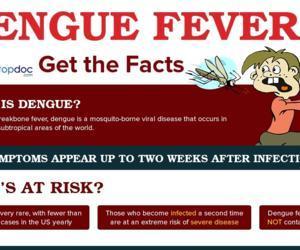What is Dengue Fever?

Dengue fever is a viral disease that owes its origin to and is transmitted by the Aedes aegypti mosquito, the same insect that is also responsible for spreading Chikungunya, Zika fever, and Yellow fever, among other life-threatening diseases. Originally, Dengue fever was confined to tropical and subtropical countries. Now, it is penetrating into other areas, mainly due to travelers that contract and spread the infection to those around them.
Continents Where Dengue Fever is Common Include:
- Central and South America, and the Caribbean Islands
- African countries below the Sahara desert
- South Asia, mainly in Malaysia and Singapore
- Northern territories of Australia
The United States has recorded cases of the infection in both Texas and Florida that can be attributed to the immigration of people from Mexico and travelers that visit the Caribbean islands.
How Does Dengue Fever Spread?
This disease is contracted when the Aedes aegypti mosquito bites an infected person and draws blood. The same mosquito then releases the Dengue pathogen when it bites healthy people. Transmission is exclusively through this type of mosquito, and is generally not through human-to-human contact. The risk of transmission is greater, however, when body fluids (infected blood and plasma) are shared through transfusion or via open wounds.
Signs and Symptoms
Typically, Dengue fever incubates for four to seven days before producing minor flu-like symptoms. The severity usually increases after a week of being infected. Some of the symptoms of Dengue fever include:
- Painful throbbing sensation in the head
- Fever of above 106 degrees
- Noticeable swelling of the lymph nodes
- Painful muscles and joints
- Decreased mobility
- Rash
- Nausea and vomiting
- Bleeding from the nose and gums
- Bruising and cracking of the skin (especially in advanced stages)
- Children younger than 5 years old may experience convulsions due to high fever
Diagnosis
Five basic laboratory techniques help in identifying the Dengue fever virus:
- Isolation of the virus from the third day to the fifth day of infection, and its cultivation in a petri dish
- Molecular testing that detects the virus’s nucleic acids (genetic materials)
- Tests that detect the antigens or proteins of the Dengue fever virus
- Tests to identify the antibodies produced in response to the virus
- Full blood count, that measures the presence of red blood cells, white blood cells, and platelets
If Dengue virus is detected early, it makes treatment of a patient's symptoms easier.
Treatment
Unfortunately, there is not yet a cure for Dengue fever, and the best that doctors can do for patients is to relieve pain, fever, and inflammation using analgesics and anti-inflammatories. Blood-thinning medications and ibuprofen are normally avoided, however, because of their tendency to provoke bleeding. The best thing to do is if you believe you have Dengue fever is to get yourself tested for the virus and if it is confirmed, get plenty of rest and wait until the fever is reduced.
Dengue Hemorrhagic Fever
A more virulent form of Dengue has been discovered, that is often referred to as Dengue Hemorrhagic Fever. These particular groups of people are more like to contract Dengue Hemorrhagic Fever:
- People that have remaining antibodies from a previous infection of Dengue fever.
- Children from 5 to 12 years old.
- Females
- Patients with weakened immune systems, such as those with HIV.
The symptoms of this infection are more destructive than those of normal Dengue fever. Dengue Hemorrhagic Fever is often accompanied by enlargement of the liver and severe circulatory blockages. Pain and high fever may add to this to cause infected patients to experience a near-comatose state, and in some cases, death.
The Bottom Line
Because there is no vaccination for Dengue fever, the best thing to prevent it is to avoid the risk factors. This includes having regular medical checkups after returning from high-risk countries, using mosquito repellents and mosquito nets, and minimizing breeding grounds for mosquitos.















